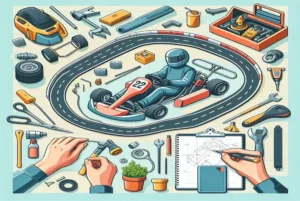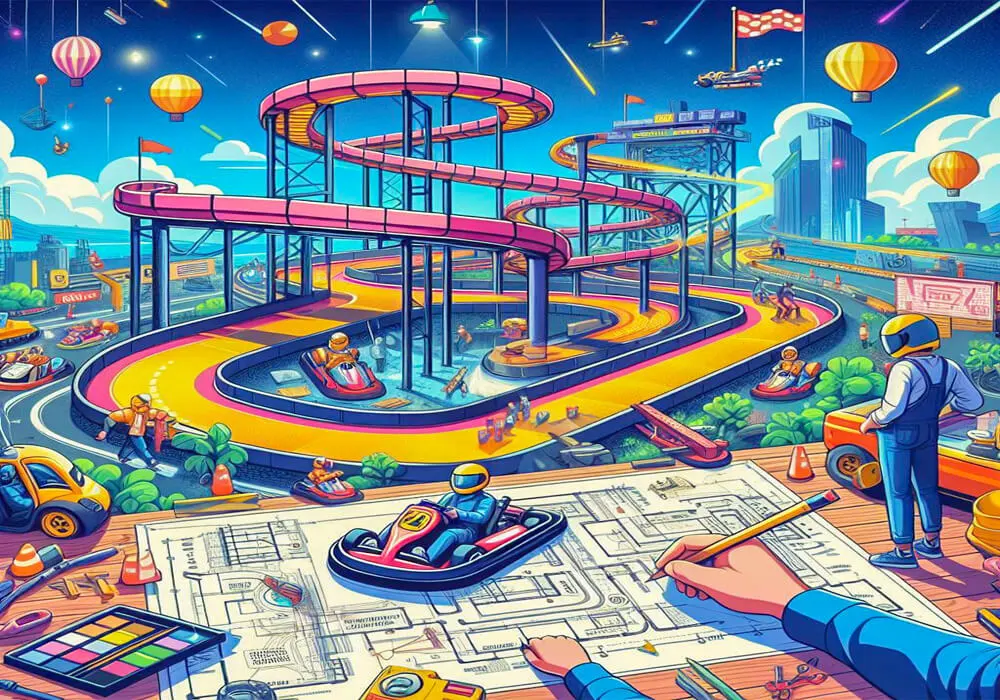How to Build Your Own Go Kart Track?
Have you ever dreamed of having your own go kart track right at home? Building a go kart track in your backyard or land space can be an exciting DIY project.
Not only is it great weekend fun for family and friends, but it also opens up opportunities to host competitions.
Constructing a track does require some planning, equipment, and labor. But the payoff is huge in terms of enjoyment, memories, and even skills learned.
This comprehensive guide takes you through the entire process of how to build a go kart track from initial planning to the final test runs.
Step by step Guide to Build Go Kart Track

When embarking on building your own go kart track, there are several key steps to ensure proper construction:
Location and Space Planning
The first step is identifying the right location with adequate space on your property. Decide where the track will fit best based on:
- Yard terrain and layout
- Access and proximity to home/garage
- Local regulations and homeowner covenants
Measure the area to design the track’s shape and dimensions. Oval and circuit-style tracks are popular choices. Allocate space for runoff areas too.
Track Design and Layout
Sketch your track plans to scale including:
- All turns, straightaways, and runoff areas
- Start/finish line and staging setup
- Seating/viewing stands (optional)
Finalize the route to leverage existing terrain. Avoid overly sharp turns and steep sections. Have the route surveyed and marked if needed.
Building the Track Surface
Lay down and compact an aggregate stone base using an excavator or bobcat. This creates a solid foundation.
For the track surface itself, packed clay or dirt offers an affordable option. But asphalt, concrete, or special polymer blends provide more durability and consistent grip.
Safety Barrier Construction
Install safety barriers around the entire perimeter using:
- Tires stacked and bolted together
- Wooden planks or guardrails
- Plastic water barriers
Barriers absorb impacts and prevent karts from leaving the track. Leave small gaps at corners to allow karts to slide through.
Incorporating Exciting Track Features (Optional)
Consider adding a few unique track features like:
- Tabletop jumps
- Sloped embankments
- Chicanes (quick tight turns)
Features make runs more exciting. But only add what’s safe based on drivers’ skill levels.
Equipment and Tools Needed
Key equipment and tools for building a go kart track include:
1. Excavator, loader, rake, tamper
2. Hand tools: shovels, measuring wheel, spikes, sledgehammer
3. Barriers: tires, guardrails, water barriers
4. Surfacing materials: clay, gravel, asphalt, concrete
Safety gear – Hard hats, reflective vests, gloves, and steel toe boots
Step-by-Step Building Process:
- Mark out track area and route
- Clear vegetation and remove topsoil
- Dig down 4-6 inches and create super-elevated turns
- Install perimeter barriers first
- Add aggregate base layer evenly across entire route
- Compact aggregate tightly using equipment
- Construct track surface (asphalt, concrete, clay)
- Install safety barriers around entire track
- Add any track features like jumps
- Do final track grading, tamping, and smoothing
Inspect the finished track thoroughly looking for hazards. Make any fixes needed. Installing warning signs is also a good safety measure.
FAQs
How much space is needed for a go kart track?
For a small backyard track, you need a minimum of 30×50 foot print. But more space allows for longer routes and runoff areas. Plan for at least a half acre site.
What is the best surface material?
Asphalt or concrete lasts the longest while providing a smooth ride. But compacted clay packed on an aggregate base works too at a lower cost.
What safety gear should be worn?
Helmets certified for motorsports (SNELL or DOT rated), eye protection, sturdy shoes, gloves, and protective clothing from head to toe.
Can children ride on the track?
Yes, but karts should match rider ages/sizes. Smaller electric kids karts are safer. Adult supervision is a must with training on rules.
Are permits needed to build a track?
Structures like viewing stands may require permits. But if the track stays at ground level, permits often aren’t needed. Do check local regulations.
Conclusion
Constructing your own go kart track is an ambitious but rewarding project. Following this guide will ensure proper planning and execution from initial layout to the finished track surface. While labor-intensive, the end result provides endless entertainment. Just take time to build key safety steps into the design. With good preparation and adherence to local codes, you’ll be racing around your own track in no time!

